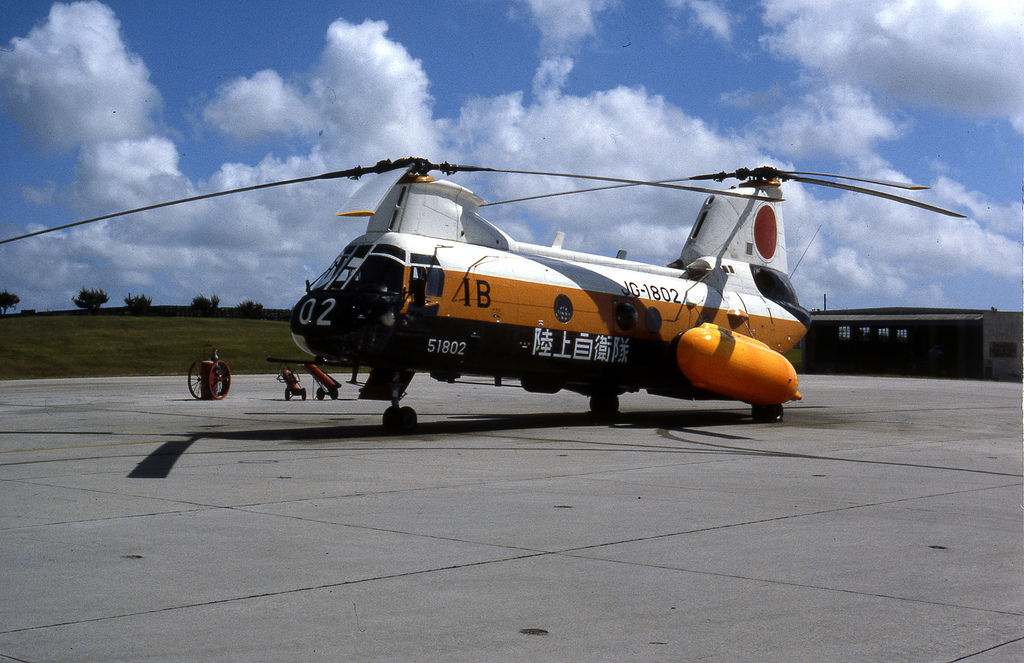Aircraft Technical Data
Boeing Vertol (Kawasaki) KV 107

| Details | |
| Country of Origin | United States of America |
| Type | Medium to heavylift utility helicopter |
| History | Boeing Vertol's Model 107 is best known as the military CH46 Sea Knight, but small numbers were built as airliners and utility transports for commercial customers. <p>The then independent Vertol company (previously Piasecki) designed the 107 in the late 1950s as a medium lift helicopter for US Army evaluation. Three prototype Lycoming turboshaft powered Vertol 107s were built (the Army ordered 10) designated YHC1As, and first flight occurred on August 27 1958. By that time though the Army's interest had switched to what would become the Chinook and it placed no orders. However in February 1961 Vertol (Boeing acquired Vertol in 1960) won a US Marine Corps competition with a developed General Electric T58GE8 powered version of the BV 107, and the type was ordered into production as the CH46A Sea Knight. <p>The commercial 107 is based on the CH46A powered by the civilianised CT58110 (equivalent to the T58GE8). The first commercial 107 to fly was one of the three original development aircraft built for the US Army converted to the new standard, its first flight in the new configuration was on October 25 1960. Offered in two forms, the KV 107/II1 utility transport and KV 107/II2 airliner, only the latter was built. KV 107/II2 customers included New York Airlines, who ordered three configured to seat 25, Columbia Helicopters in the US (Columbia still operates KV 107s) and Japan's Air Lift. A more powerful 1045kW (1400shp) CT581401 powered longer range KV 107/IIA17 was offered and one was built for the Tokyo Police. <p>Japan's Kawasaki built all commercial 107s, and has held manufacturing rights to the 107 since 1965. Kawasaki has also built KV 107s for the Japanese military and Saudi Arabia |
| Powerplants | Two 930kW (1250shp) General Electric CT581101 or IshikawajimaHarima built CT58IHI1101 turboshafts driving two three-blade rotors. |
| Performance | KV 107/II2 - Max speed 270km/h (146kt), economical cruising speed 232km/h (125kt). Initial rate of climb 1440ft/min. Hovering ceiling out of ground effect 8800ft. Range with a three tonne (6600lb) payload and reserves 175km (95kt). |
| Weights | KV 107/II2 - Empty equipped 4868kg (10,723lb), max takeoff 8618kg (19,000lb). |
| Dimensions | Diameter of each rotor 15.24m (50ft 0in), fuselage length 13.59m (44ft 7in), height 5.09m (16ft 9in). Main rotor disc area (total) 364.6m2 (3925sq ft). |
| Capacity | Flightcrew of two. Typical seating for 23 to 25 passengers in airliner configuration, or 12 passengers and freight in combi configuration. Executive configuration seats six to 11 passengers in main cabin. |
| Production | Total BV/KV 107 production approximately 650, with almost all for military customers. Small numbers remained in commercial service in late 1998. |
| Related Links | Boeing Vertol (Kawasaki) KV 107 |
The backbone of this section is from the The International Directory of Civil Aircraft by Gerard Frawley and used with permission. To get your own copy of the book click here. |
|








